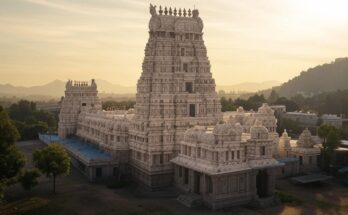
Here’s a more detailed explanation of the four types of yoga according to Sadhguru:
1. Karma Yoga (The Path of Action)
- Core Principle: Karma yoga is based on the idea that any action performed without attachment to the outcome leads to spiritual growth. It’s about acting without expecting rewards, focusing instead on the act of doing.
- Sadhguru’s View: Sadhguru emphasizes that action is inevitable in life, but the way we approach it matters. Karma yoga teaches us to transcend our egos by engaging in selfless work. The focus is on dedicating every action as an offering to a higher cause or to the Divine.
- How to Practice: Sadhguru advises being conscious of every action, not for what we get from it but for the growth it offers internally. Acts of service (seva) and helping others without expecting anything in return are key components.
2. Bhakti Yoga (The Path of Devotion)
- Core Principle: Bhakti yoga centers around love, devotion, and complete surrender to a higher power or deity. It is the path of the heart, where the practitioner seeks to merge with the Divine through intense feelings of love and devotion.
- Sadhguru’s View: Sadhguru points out that Bhakti yoga is the easiest yet most powerful path for people who are highly emotional. It transforms these emotions into an intense longing for union with the Divine. Through devotional practices, one dissolves personal identity and experiences the Divine as a living presence.
- How to Practice: Chanting, prayers, rituals, and meditations focusing on a personal deity or form of the Divine are common practices. In the Isha tradition, Sadhguru emphasizes the importance of cultivating devotion not just in formal practices but in every moment of life.
3. Jnana Yoga (The Path of Knowledge)
- Core Principle: Jnana yoga is the pursuit of self-knowledge and understanding of the ultimate reality. It involves deep contemplation and self-inquiry to differentiate between the real (the eternal, unchanging self) and the unreal (the temporary, changing world).
- Sadhguru’s View: According to Sadhguru, Jnana yoga is for those with an intellectual disposition, seeking to understand the nature of existence. However, Sadhguru also cautions that intellectual understanding without experience is not enough. True knowledge comes only when one experiences the wisdom directly, not just through reading or hearing.
- How to Practice: Jnana yoga involves studying spiritual texts (like the Upanishads), engaging in self-inquiry (asking questions such as “Who am I?”), and meditating to realize the ultimate nature of the self. Sadhguru’s teachings often emphasize meditative practices that help one go beyond intellectual understanding to direct experience.
4. Kriya Yoga (The Path of Energy)
- Core Principle: Kriya yoga is the science of using specific techniques to energize and activate the inner body and mind. It involves working with the life force (prana) to bring about physical and spiritual transformation.
- Sadhguru’s View: Sadhguru considers Kriya yoga as the most technical and powerful of the four paths. Through the manipulation of energies, Kriya yoga accelerates spiritual growth by aligning the physical body, mind, and energies with higher states of consciousness. It bypasses intellectual or emotional processes and directly works with the subtle energy system.
- How to Practice: Kriya yoga involves specific breathing techniques, postures, and meditative practices aimed at enhancing and controlling one’s inner energies. The Isha Foundation offers practices like Shambhavi Mahamudra, which is a form of Kriya yoga designed by Sadhguru for holistic well-being and spiritual growth. This technique can activate energies within to a higher pitch and bring about inner transformation.
How These Paths Interact:
Sadhguru often explains that these four paths are not mutually exclusive, and many people may incorporate aspects of each in their spiritual journey:
- Karma yoga helps purify the mind through selfless action.
- Bhakti yoga refines emotions by channeling love towards the Divine.
- Jnana yoga provides clarity of mind and intellectual understanding of the self and universe.
- Kriya yoga transforms the energies and allows for a direct experience of higher consciousness.
Sadhguru advocates for an integrated approach where these paths can be followed simultaneously, based on an individual’s nature and needs. For example, someone might practice Kriya yoga as their primary practice but also engage in Bhakti by cultivating a devotional attitude, or Karma by offering selfless service.




